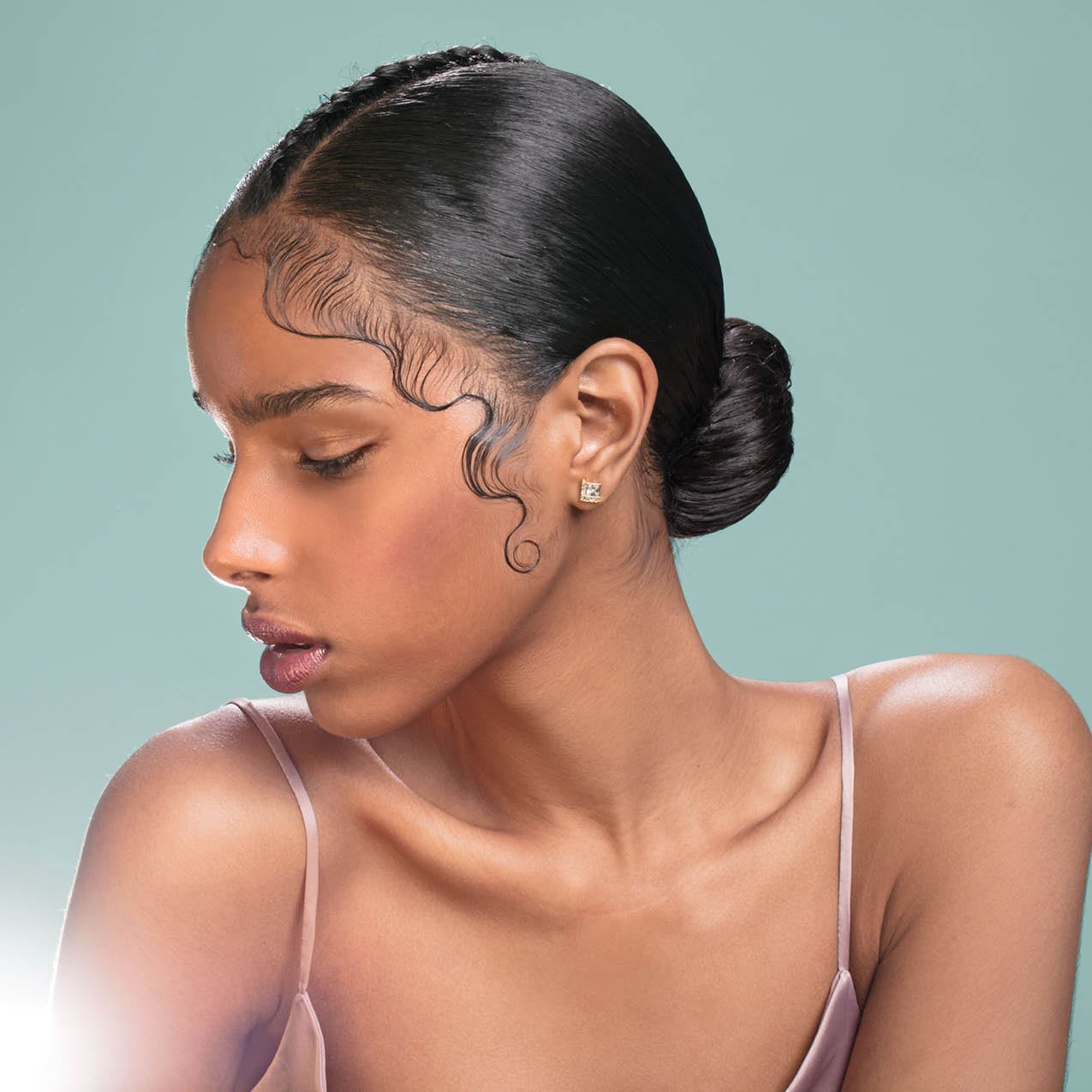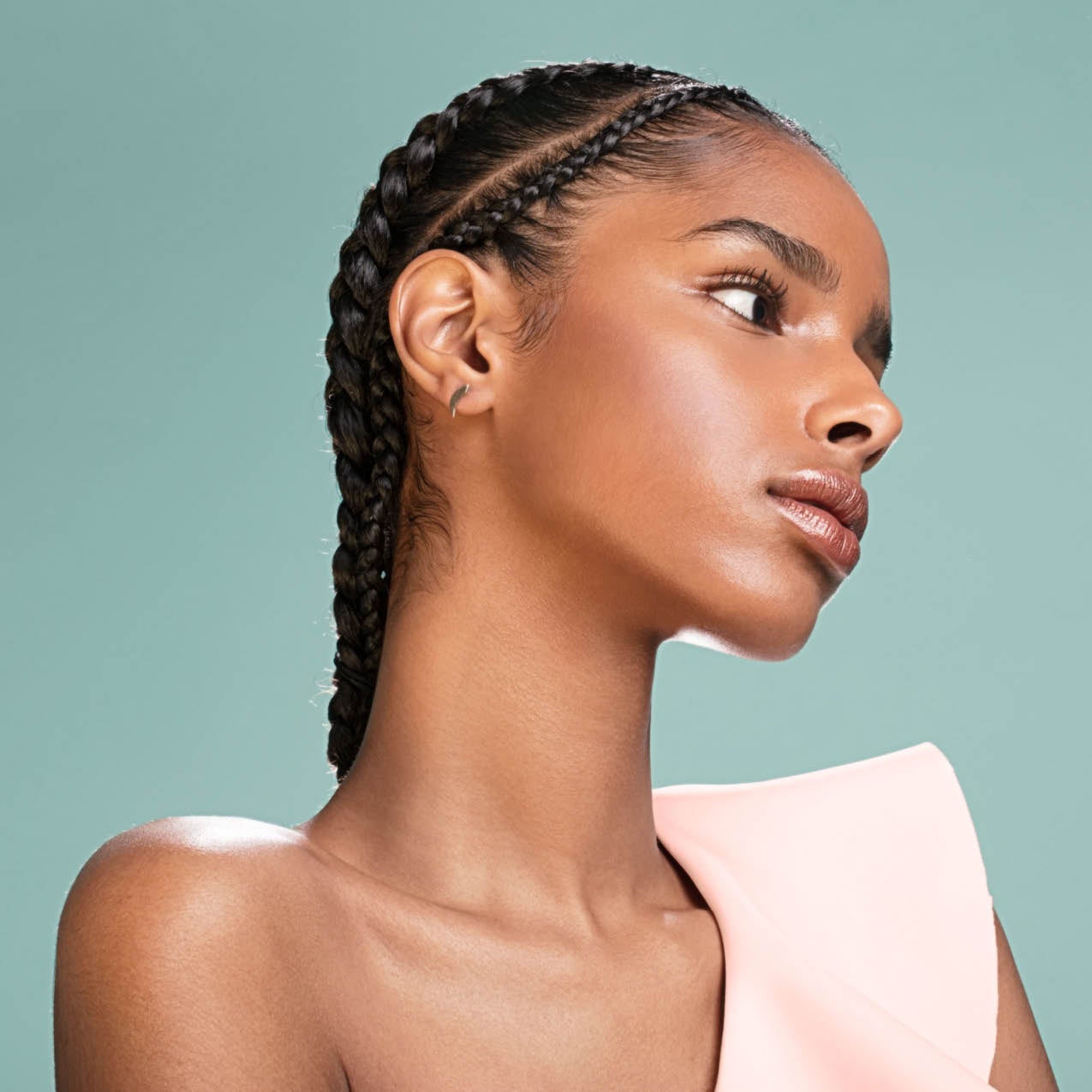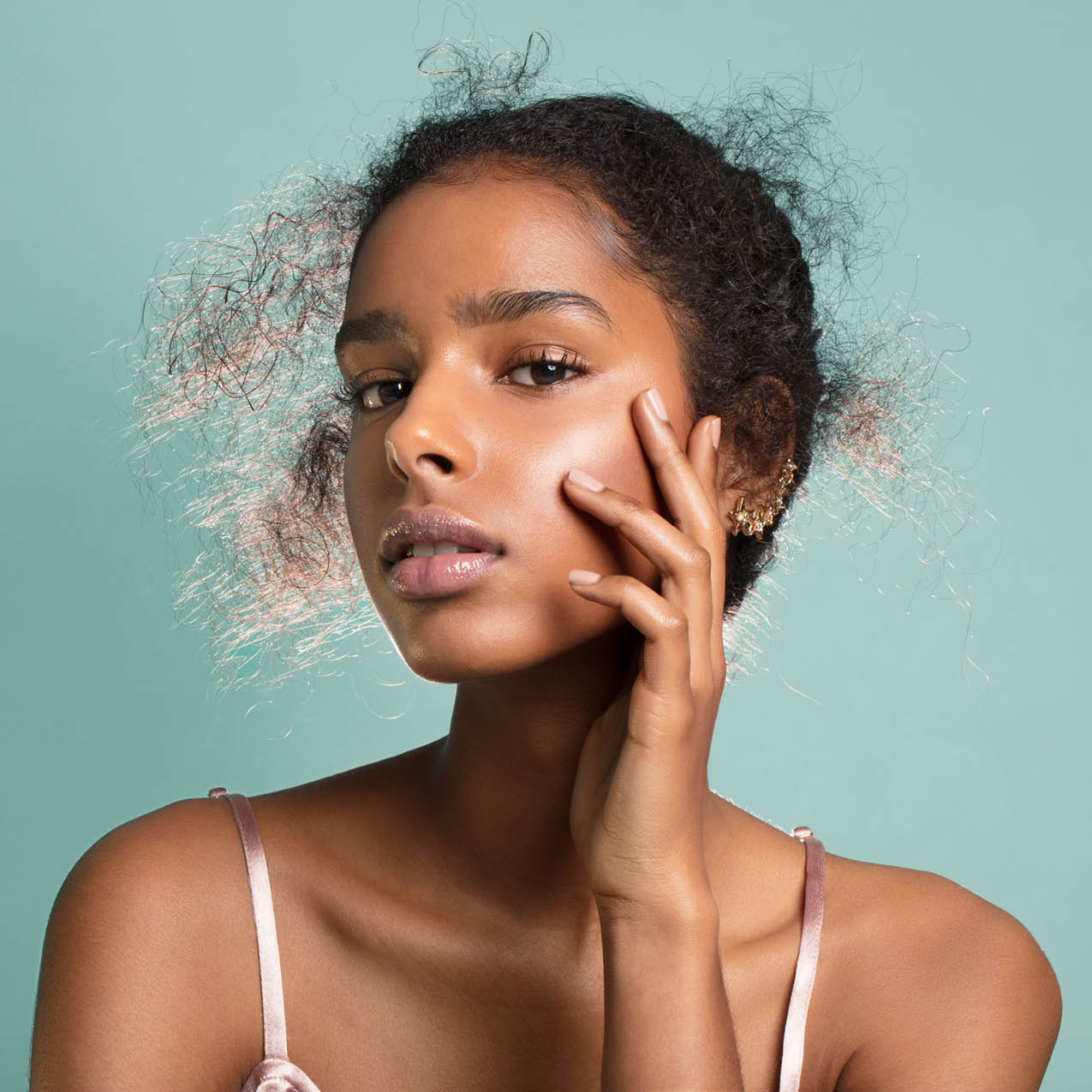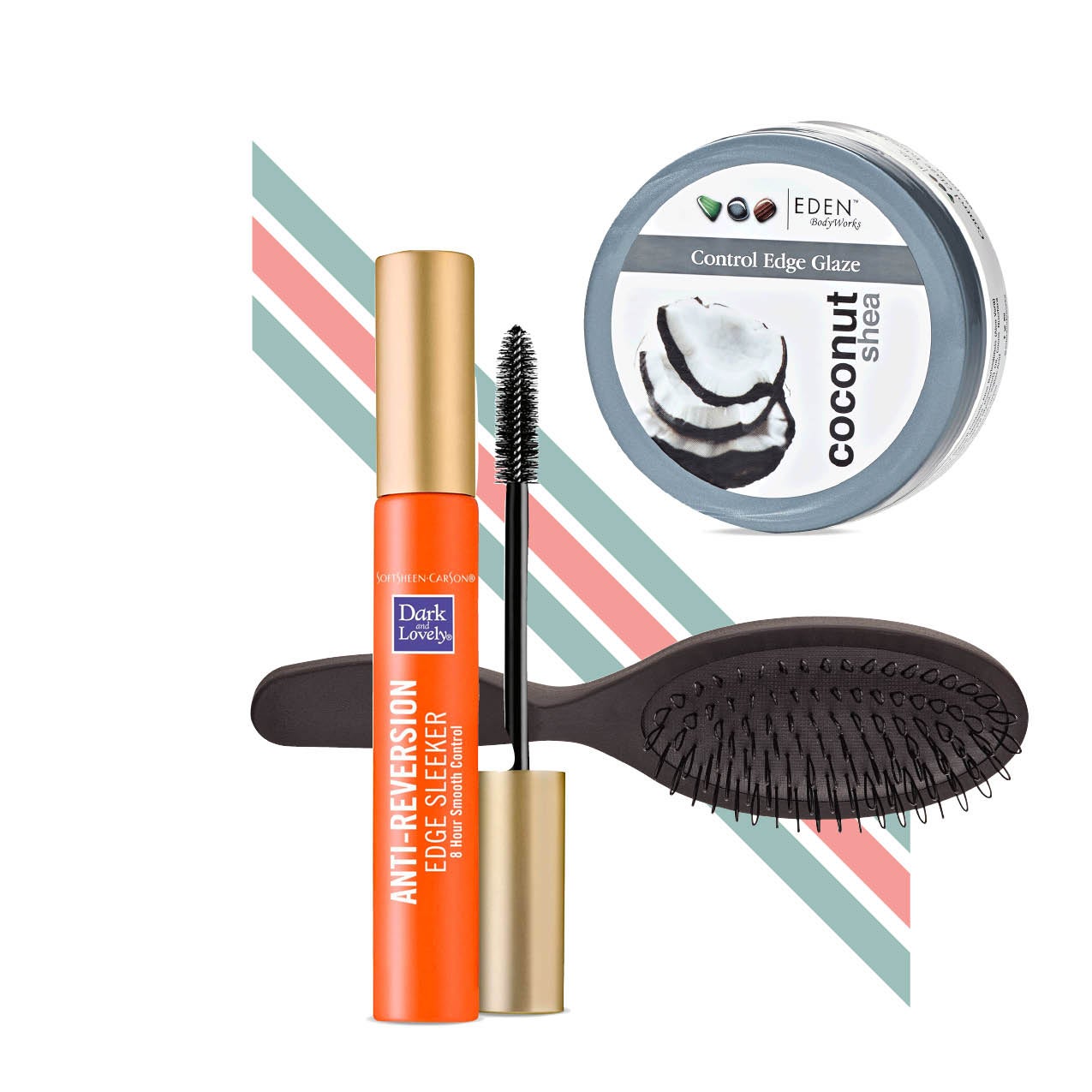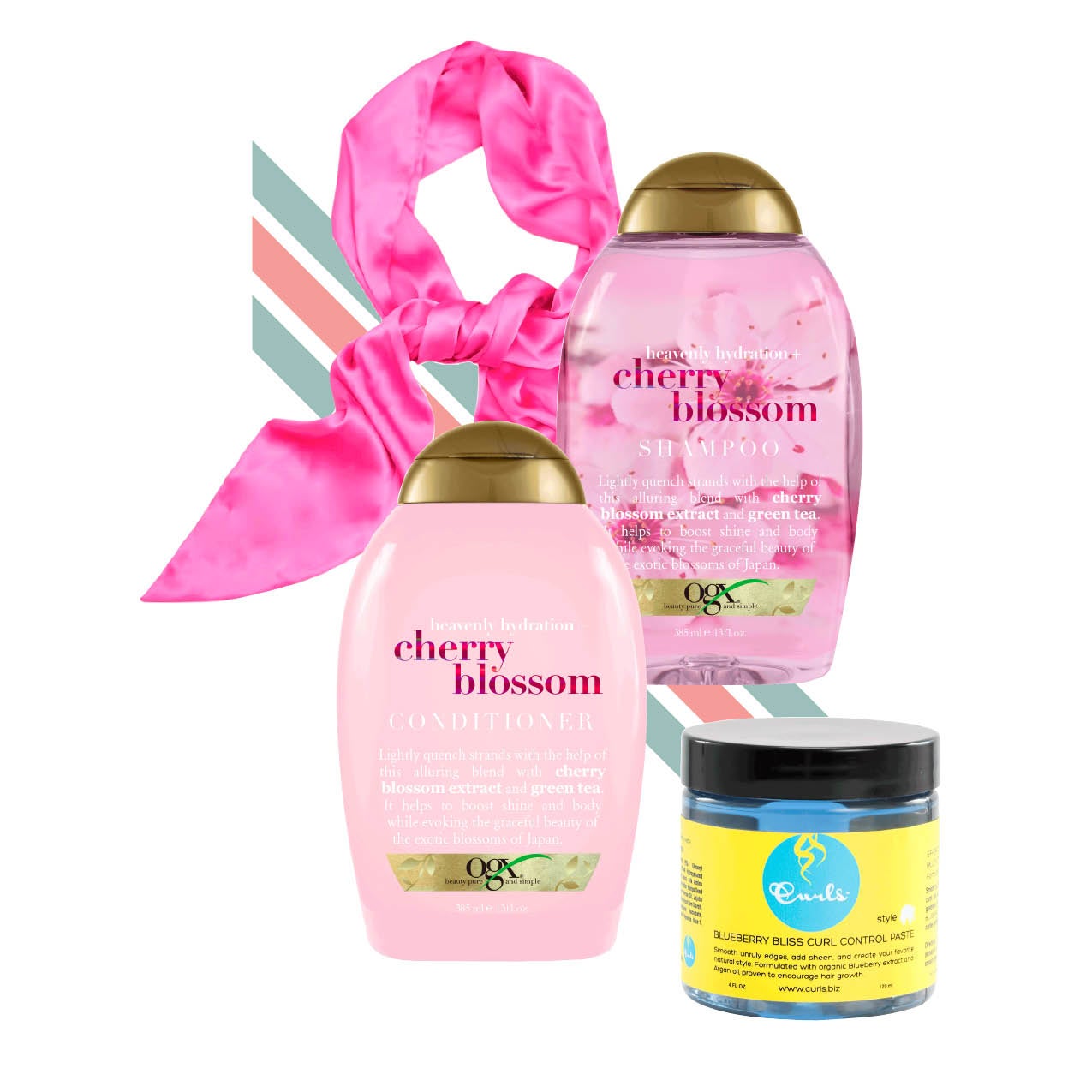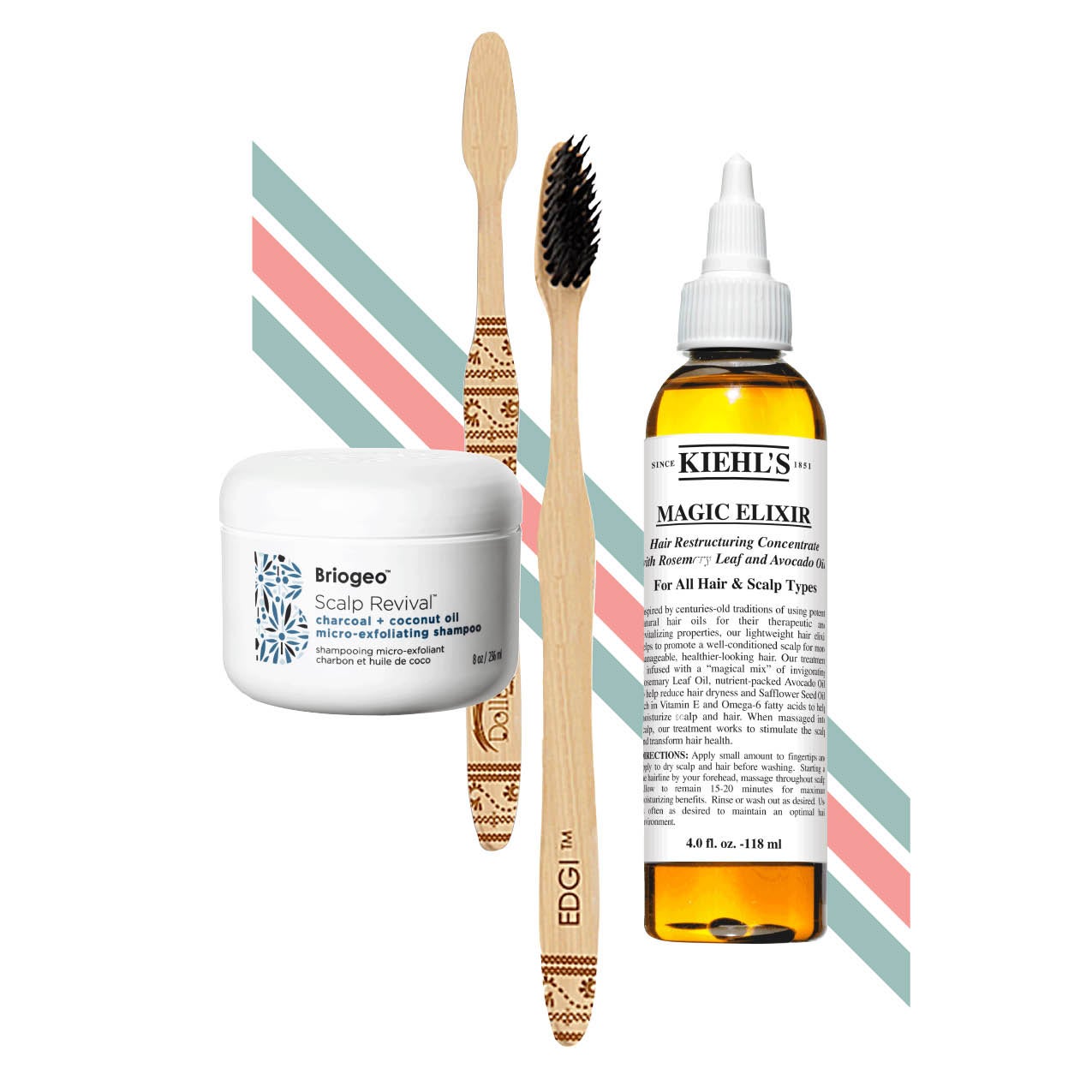Having a gorgeous hairline has deep cultural roots, yet properly caring for it often takes a back seat. Here’s a rundown of the tools, products and techniques—even massage—that are vital for maintaining healthy locks.
Taming and creatively styling the tendrils along our hairline is a popular Black tradition. The art of meticulously laying down our softest strands with the same attention to detail that brilliant painters give their masterpieces seemingly first emerged in the early seventies. In the 40 years since, the ritual has made its way to Hollywood, with stars like Yara Shahidi and Rihanna sporting their waves of baby hair on the red carpet. The tools and techniques used for this practice have remained the same, according to celebrity hairstylist Nai’vasha Johnson, whose clients specifically request to have their “baby hairs poppin’.” Says Johnson, “I like to use a rattail comb or a toothbrush—like a legit toothbrush. Sometimes you have to go back to what worked to begin with, and that toothbrush is epic.”
What happens when we don’t slick down our baby hairs in a healthy way? Our hairline is delicate and easily subject to thinning or hair loss. It’s typically “the first area to be affected when you’re going through stress,” says Gina Conwell, owner of Desired Extensions. The online boutique provides hair extensions for women battling cancer and suffering from alopecia.
Another source of stress is the tension caused by damaging hairstyles. According to Michelle Henry, M.D., a dermatologist in New York City, the small bumps that sometimes appear at the root of a tight new do are the ultimate sign of edge trouble. “It’s inflammation, and that is your follicles screaming out,” she says. After this, you will usually begin to notice gradual thinning.
When they’re worn for too long or done too tightly, our protective go-tos (braids and cornrows, for example) can also weaken wispy strands along the hairline. “You’ll start to see the slowing down of hair growth [too] and then eventually the scalp becomes very shiny,” Henry says. “It’s a sign of scarring.”
“If you catch [thinning] early, you can reverse it,” Henry says. The best course of action? Opt for stress-free styles, like looser braids, and focus on care. From digestible supplements that reduce inflammation to growth-stimulating shampoos and conditioners, products promising flourishing edges abound. Yet some of best advice can also be the most practical: Massage your scalp and hairline daily and cleanse them regularly. Removing debris and encouraging circulation will help to ensure you have ample strands to curl, shape and style as you wish.
